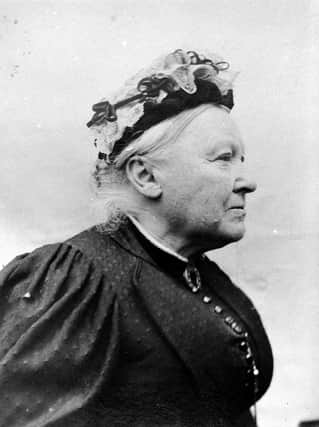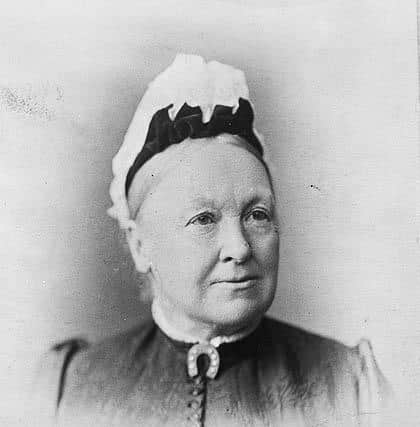Catherine Helen Spence: The 'Grand Old Woman of Australia'


From women's activist to journalist, Catherine Helen Spence wore many hats during her lifetime.
Born in Melrose in 1825, she emigrated to Australia with her family in 1839, eventually settling in Adelaide where her father David Spence was elected the city's first Town Clerk.
Advertisement
Hide AdAdvertisement
Hide AdHer brother John Brodie Spence also made a name for himself as a leading banker and politician.


But it was Catherine Helen Spence's dedication to helping those in need that helped her make her mark. She developed an interest in journalism in her teens, helped by her obvious talent for writing. She initially had poetry and short articles published in The South Australian newspaper, but when she became South Australian correspondent for The Argus, based in Melbourne, she reported under her brother's name.
Despite childhood aspirations to become a teacher, Spence focused on writing during the 1850s and 1860s. The first novel to be written by a woman about Australia (Clara Morrison: A Tale of South Australia During the Gold Fever) was published anonymously in 1854, while Tender and True: A Colonial Tale followed two years later, also anonymous. Two further novels, bearing her name, followed in 1865 and 1868.
In 1872 Spence helped to establish the Boarding-Out society, aimed at helping destitute children, with fellow emigrant Caroline Emily Clark. The pair were later appointed to the State Children's Council as a result of their work with the Society. This would prove to be the spark for a desire to help others that lasted until her death.


By the late 1870s Spence was pioneering the foundation of nursery schools and a government secondary school for girls.
Catherine Helen Spence, pictured in the 1890s. Picture: Contributed
The 1880s saw further novels published, and by the start of the 1890s, Spence was preparing to enter the political sphere. Although she had developed an interest in electoral reform in 1859, politics had largely taken a back seat.
However, the 1890s heralded Spence's return to politics. In 1891 she joined the fight for female suffrage, becoming vice-president of the Women's Suffrage League of South Australia. After South Australian women were enfranchised in 1894, Spence turned her attention to similar campaigns in Victoria and New South Wales.
Advertisement
Hide AdAdvertisement
Hide AdBy 1893, Spence had secured financial backing for a campaign pushing for proportional representation, and received support from the Labor Party as well as a handful of smaller groups.
After travelling to the USA, Britain and Switzerland in 1893, Spence returned to Australia the following year.
Her political career continued in earnest. She became Australia's first female political candidate in 1897 and in 1899 and 1900 continued to push for the introduction of 'effective voting' but was ultimately unsuccessful.
Catherine Helen Spence was a popular figure during her political career. She transcended party politics and was held up as a symbol of what women in Australia could look to achieve.
On her death in 1910 she was mourned as the 'Grand Old Woman of Australia'.
There are numerous memorials to Catherine Helen Spence in Adelaide including a bronze statue and a building named for her at the University of South Australia. A commemorative stamp was issued in 1975 by Australia Post, she was commemorated on the Australian centenary five-dollar note issued in 2001, and a plaque was installed at the site of her Melrose home.